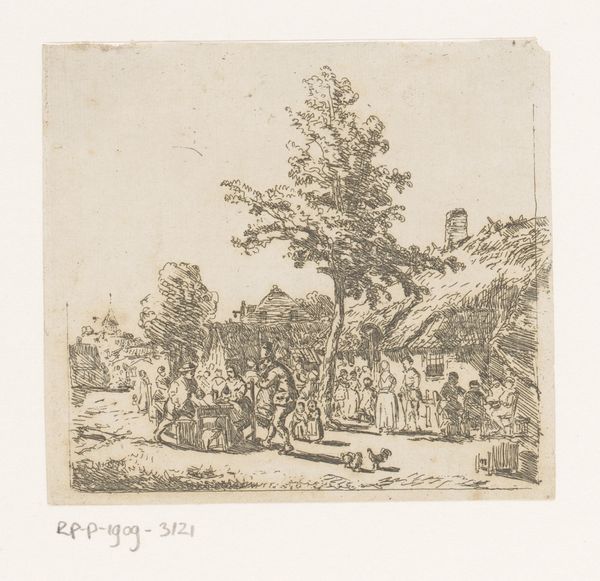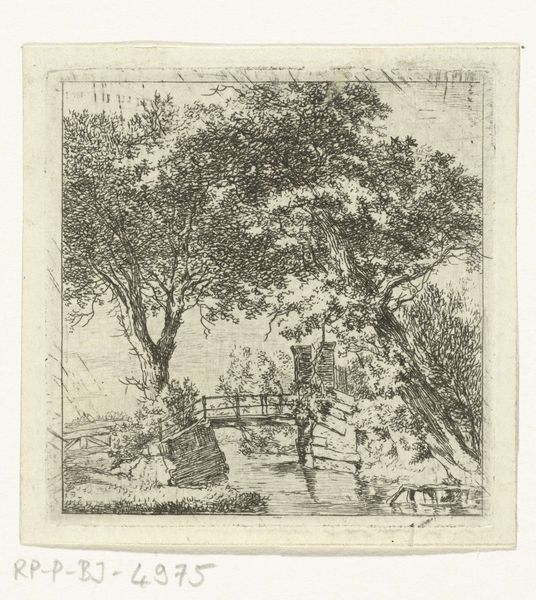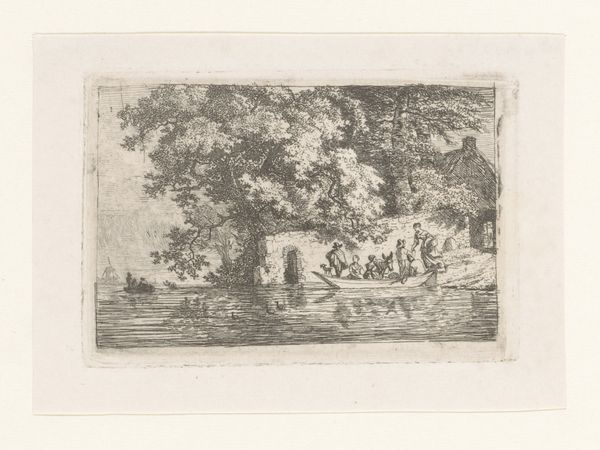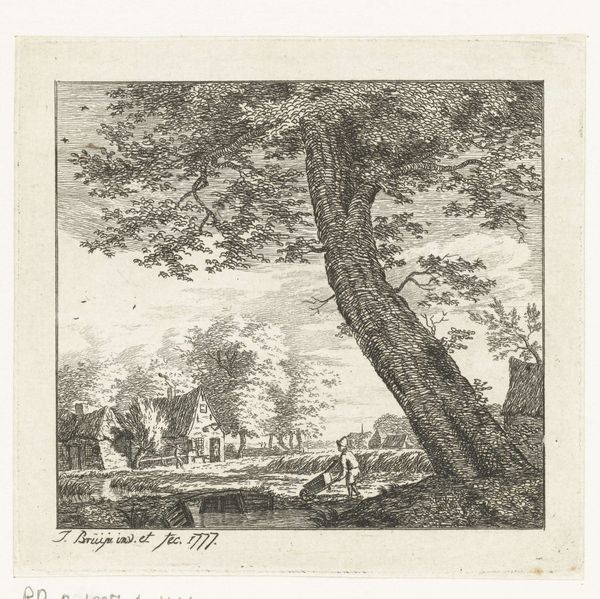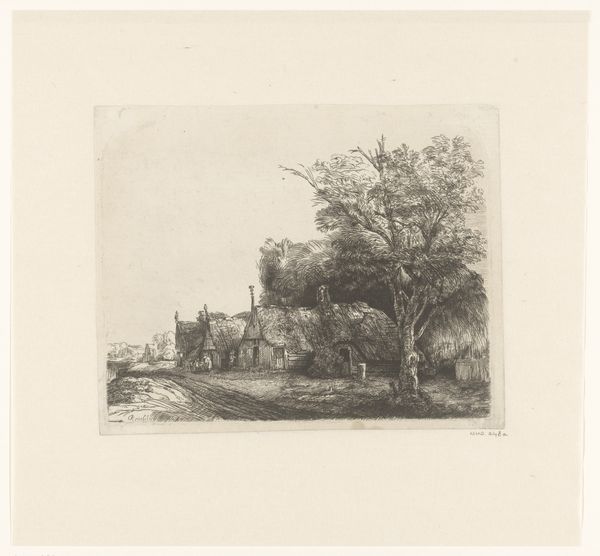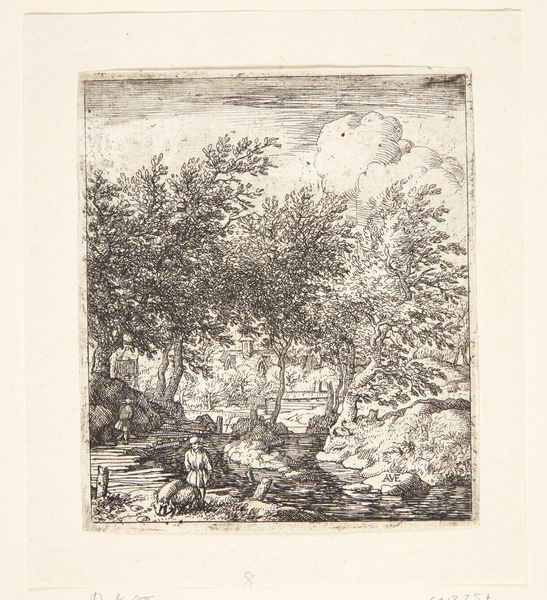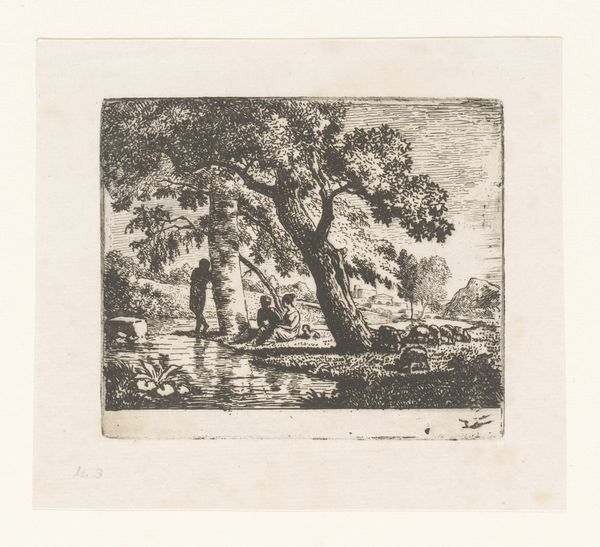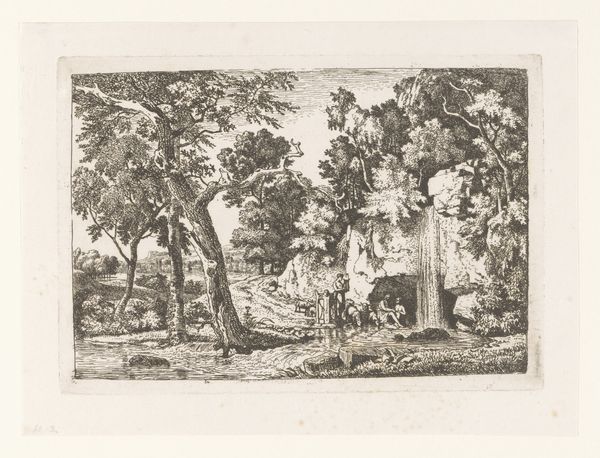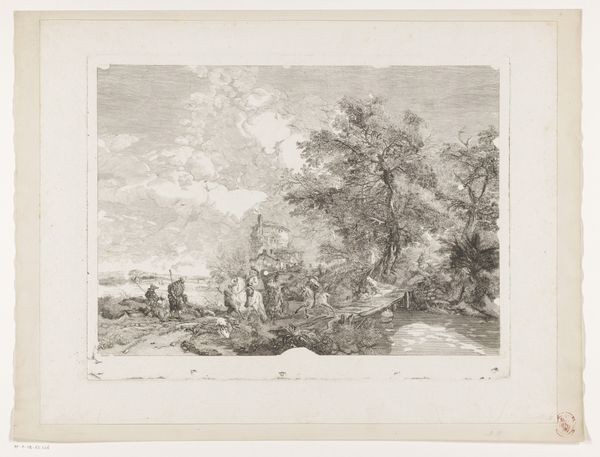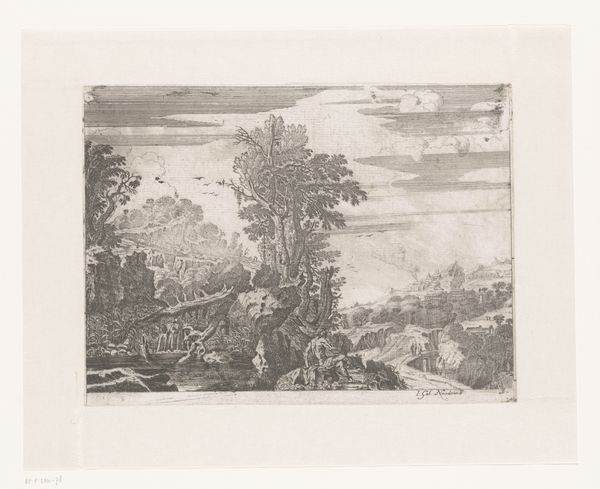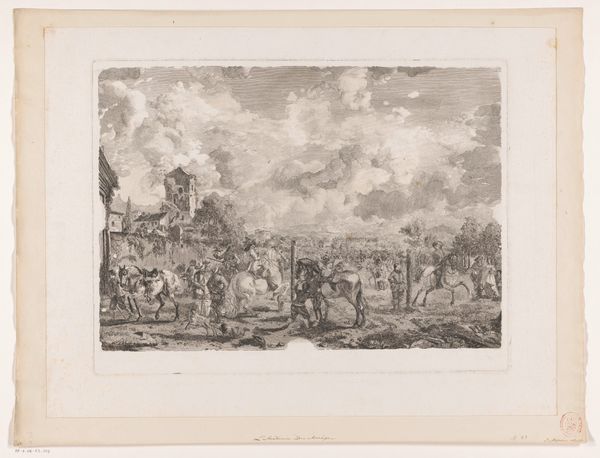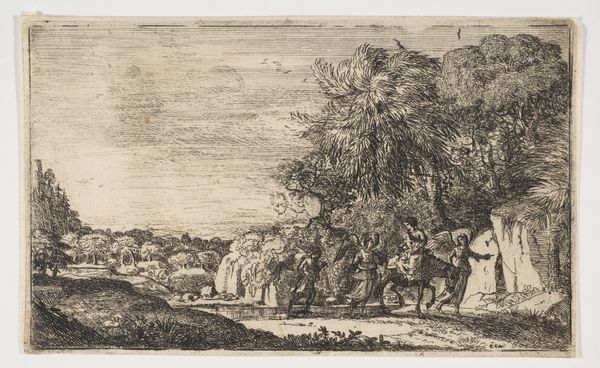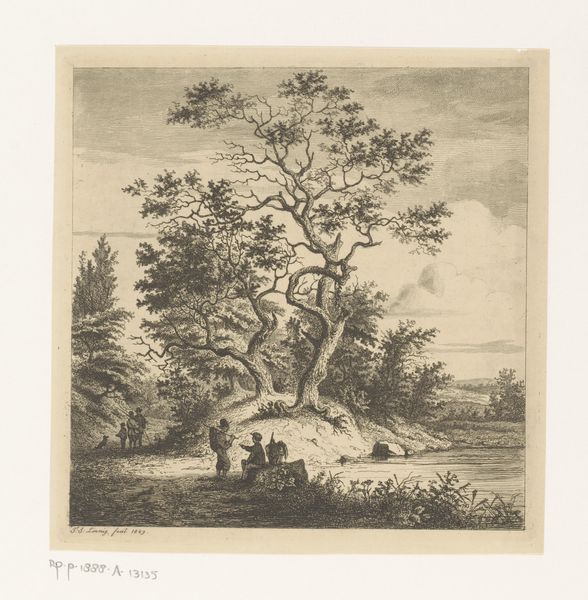
print, etching
# print
#
etching
#
landscape
#
etching
#
figuration
#
genre-painting
#
realism
Dimensions: height 96 mm, width 102 mm
Copyright: Rijks Museum: Open Domain
Curator: This print, "Village Scene with a Large Company on a Square" by Florent Nicolas Crabeels, was created sometime between 1839 and 1879, and it depicts just that—a bustling scene rendered through the medium of etching. Editor: My initial reaction is to the work’s captivating depiction of depth. The strategic use of the light and shadow creates a spatial dimension, beckoning the viewer into the heart of the scene despite its relatively small scale. Curator: Indeed, and Crabeels expertly employs hatching to build tonal variations in what we perceive as an everyday encounter with a convivial gathering taking place around tables outside dwellings. Consider how Crabeels frames a vision of community in the margins between public and private life. Editor: Observe how the central tree operates as a structural anchor; its form divides and connects, creating both tension and harmony within the composition. This also suggests a reflection of human structures reflected in natural ones. The distribution of light emphasizes the textures present—rough surfaces of buildings and clothing. It appears almost like visual music to me. Curator: Precisely, that distribution guides our gaze through societal structures embedded in the composition: families, classes and their dwellings situated on the periphery versus those at the centre near a shared table. The placement emphasizes themes of connection and maybe even belonging. Editor: But let's also acknowledge that the scene appears meticulously staged. Each figure is carefully placed, seemingly engaged, but existing mostly to form to the overall pictorial arrangement rather than tell unique stories. I find this more indicative of how he understands representational practice versus a study of social behaviour. Curator: True; but even with a perceived theatrical arrangement, consider what aspects and ideals of village life Crabeels chooses to immortalize—community activity over isolated labour, for example. Such thematic prioritization communicates distinct value for what brings a populace together over individual endeavours. Editor: A compelling point, though it appears, structurally, that what we can take away from an engagement is that representational practice may reveal the inherent distance between the idealized projection of collective memory and its actual existence within broader lived experience, highlighting visual artistry itself in shaping socio-cultural narratives within visual rhetoric. Curator: Your insightful analysis emphasizes its multifaceted essence—historical and social while also artistic—in providing diverse engagement avenues regardless whether aesthetic interpretation foregrounds sociopolitical insight rather than visual artistry’s transformative potential. Editor: Precisely. Ultimately, whether Crabeels intended a grand narrative or simply pursued a visual aesthetic exercise of his etcher's skill is really what remains up for interpretation.
Comments
No comments
Be the first to comment and join the conversation on the ultimate creative platform.
